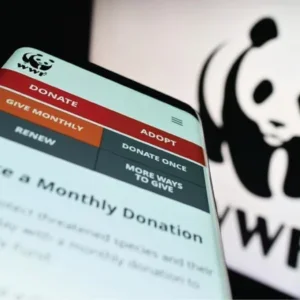The steep decline in sales of European Union (EU) finished leather to its number one market, the United States, has been highlighted by a comprehensive report on the global leather (and textile) market written for the European Commission. Faced with developing country competition, the report, written by consultants Market Access Information and Analysis and the Institut Français de la Mode, says that exports to the USA fell by 40% between 2000 and 2003, tumbling from €489 million in 2000, to €334 million in 2002 and €293 million in 2003.
Apart from cheap overseas competition, the report stressed the US market was ‘difficult’, notably in customs documentation, especially since the September 11 attacks, which have led to ‘the implementation of burdensome and time-consuming security measures’. The weak dollar has also damaged EU exports, it said, especially when compared with the relatively strong euro.
Across the world, however, there have been falls in EU exports of finished leather to 18 key markets, from €3.4 billion in 2000 to €2.9 billion in 2003, with steep falls in sales to Canada, Japan, Malaysia, South Korea, Taiwan, Thailand and Russia. Indeed the report stressed that although Russia is one of the most important current and potential markets for EU leather exports, and supply of leather raw materials, ‘it is also viewed as a difficult market’. It continued: ‘Certification procedures, which are the main area of concern, hamper EU exports of leather products’, for instance an obligation to indicate the registration number of the certification body on labels.
The picture is not much better regarding raw materials, where export restrictions affect the EU tanning industry: ‘In general, customs clearance is non-transparent, burdensome, costly and time consuming.’
Indeed, worldwide, the report noted that for the EU leather sector, export restrictions are the most damaging trade barrier, for instance in India, and the export tax on leather raw materials imposed by Argentina. There are also concerns that a similar export tax could be introduced in Pakistan, claimed the report. Overall, there has been a fall in raw material imports to the EU from Brazil, Australia and Russia.
The report identifies India, China, the US, Pakistan and Russia as ‘very important markets’ for the supply of raw materials, whilst Argentina, Australia, Brazil, Egypt, Indonesia, South Africa, Malaysia and Brazil are labelled as ‘important suppliers (mainly by tanners)’.
Overall, EU imports of raw materials were worth €2 billion in 2003, a significant increase on 1999’s €1.4 billion, but down from 2001’s €2.6 billion. Brazil’s market share has tumbled recently, down from €403 million in 2002 to €294 million in 2003, with significant declines also in exports from Russia, Argentina, Australia and South Africa.
Regarding Brazil, the report highlights how Brazilian semi-finished leather (wet-blue) producers are lobbying for the swift removal of an export tax. This is currently 7%, will be 4% in 2006, and which should be zero in 2007, although its phasing out has already been postponed once.
That said, exports had been increasing until the fall from 2002-3. There is also a 9% export tax on raw hides and skins, and a reference price system for wet-blue exports. The abolition of these export restrictions are opposed by Brazil’s finished leather industry, whose local supplies are made more abundant (and comparatively cheap) as a result.
A similar (15%) tax exists on Argentine exports of bovine raw hides, skins and wet-blue but, in reality, the report notes, the significant devaluation of the peso in recent years has eroded its impact, allowing exports to the EU to rise.
Looking at China, the report says some EU tanners have alleged that the Chinese government has prohibited ‘in practice the export of raw hides and skins and this gives an unfair competitive advantage to Chinese tanners’. However, an in-depth analysis, said the report, ‘revealed that only an export tax is applied on goatskins’, but that ‘EU imports of Chinese raw materials remain modest but have been continuously increasing since 1999’.
Some slow liberalisation was cited in Mexico, where ‘applied tariffs for… raw materials will be completely phased out…in 2010’.
Regarding finished leather, EU imports have held steady, however, with imports from the 18 key supplying countries being worth €944 million in 2003, compared with €974 million in 2000, (albeit with an increase to €1.2 billion in 2001). Significant growth in purchases of Chinese leather have been registered – €63 million to €102 million from 2000 to 2003, whilst Indian sales collapsed from €215 million in 2001 to €147 million in 2003. USA sales have also fallen significantly, from €42 million in 1999 to €14 million in 2003.
Other specific trade barrier trends noted by the report include:
*A sharp reduction in Chinese import duties since its World Trade Organisation accession, notably a cut to the 45% duty on ovine doubleface leather
*Applied tariffs in Japan on EU leather products being ‘particularly harmful’. Indeed, it says Japanese ‘documentary requirements for the application procedure for the tariff quota system are viewed by EU leather exporters as excessive and too burdensome’.






